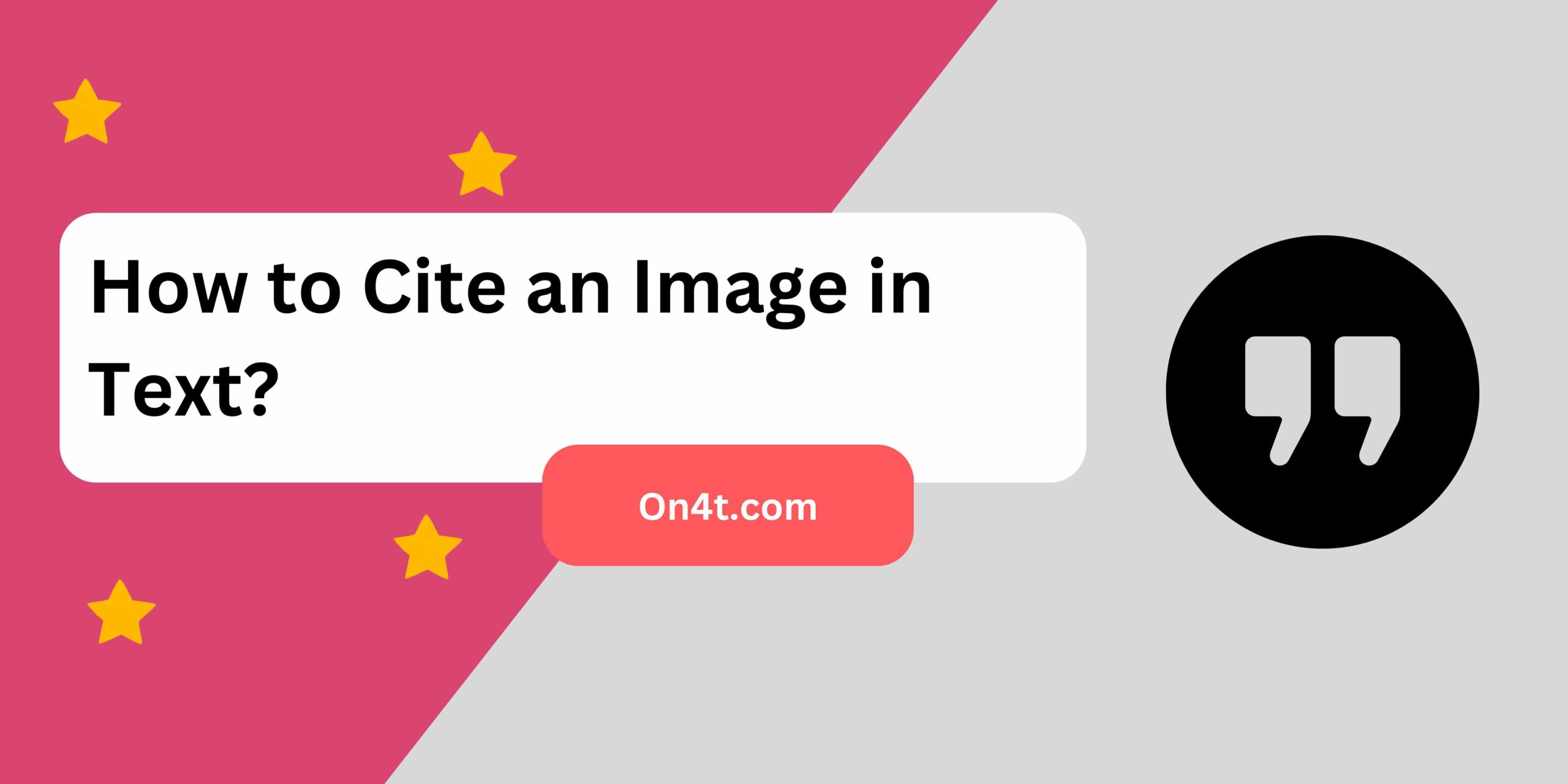When you use a picture from somewhere else in your writing, you need to tell everyone where it came from. This is called citing an image in text. It’s like saying “thank you” to the person who took or made the picture by telling others about them.
In this article, we will discuss how to cite an image in text. We’ll show you some easy steps to follow so you can do it right every time you use a picture. This way, you give proper credit to its creator.
What is Citing of Images?
Citing an image means giving credit to the person who created it. When you use an image in your work, you need to tell others where you got it from. This is important because it respects the original creator’s efforts.
To cite an image in text, you write down details about the image, like the artist’s name, the title of the image, and where you found it. This helps others find the image if they want to see it too.
Knowing how to cite an image in text is simple and shows you are honest about using other people’s work. It’s like saying, “I got this picture from here,” so everyone knows where it came from.
General Guidelines for Citing Images
When you use an image in your writing, it’s important to give credit to the person who made it. This is called citing the image. Knowing how to cite an image in text is easy and helps you avoid copying someone else’s work without permission.

First, find out who made the image. Write their name. Next, write the title of the image. Then, add the date you found the image and where you found it. If it’s from a website, write the web address too.
Citing Images in Different Styles
APA Style
- Format: Author(s). (Year). Title of work. [Type of work]. URL
- Example: Smith, J. (2020). Beautiful Sunset. [Photograph]. http://example.com/sunset
- Explanation: Start with the author’s last name and initials, followed by the year in parentheses. Then, write the title of the image in italics, include the type of work in brackets, and finish with the URL.
MLA Style
- Format: Author(s). “Title of Image.” Title of the Container, Other contributors, Version, Number, Publisher, Publication date, URL.
- Example: Smith, John. “Beautiful Sunset.” Nature Gallery, edited by Jane Doe, version 2, no. 5, National Geographic, 2020, http://example.com/sunset
- Explanation: Start with the author’s full name, followed by the title of the image in quotation marks. Then, include the title of the container (like a website or book), other contributors, version, number, publisher, publication date, and the URL.
Chicago Style
- Format: Author(s). Title of Image. Year. [Type of work]. URL.
- Example: Smith, John. Beautiful Sunset. 2020. [Photograph]. http://example.com/sunset
- Explanation: Begin with the author’s full name, followed by the title of the image in italics. Then, write the year, type of work in brackets, and end with the URL.
Using On4t Image to Text Generator

The On4t Image to Text Generator makes it super easy to get text from images. This helps a lot when you need to gather details for citations. It’s like magic, just click a few buttons and you have your text.
To use it, first upload your image to the tool. Then, click the “Extract Text” button. The tool will do its work and show the text from the image. Now you can use this text to help you know “How to Cite an Image in Text?”
On4t makes the process fast and simple. No more typing out text by hand. Just use the On4t Image to Text Generator and get your work done quickly!
Common Mistakes and Tips
When writing content, many people make common mistakes that can be easily avoided. One big mistake is not citing images properly. Knowing how to cite an image in text is very important. It gives credit to the original creator and helps others find the image.
Another mistake is using complicated words and long sentences. Keep your sentences short and simple so everyone can understand. This way, even a 5-year-old can follow along.
Lastly, people often forget to check their work for errors. Always double-check your content to make sure everything is correct. These tips will help you write better and more clear content.
FAQs
Why is it important to cite images in text?
Citing images gives credit to the original creator and avoids plagiarism.
What information should be included in an image citation?
Include the creator’s name, title of the image (if any), source where it was found, and the date accessed.
How do you cite an image from a website?
Use the creator’s name, title or description of the image, website name, URL, and access date.
How do you cite a photograph or image from a book or journal?
Include the photographer’s or artist’s name, title of the image, book or journal title, page number, publisher, year published, and URL (if applicable).
Conclusion
Citing an image in text means telling where you got the picture from. You do this to give credit to the creator. Always include the author’s name, the title of the image, and where you found it, like a website or book.
By doing this, you show respect for the creator’s work and help others find the image if they want to see it. Remember, sharing where you got your images is a good habit and keeps everything fair and clear.